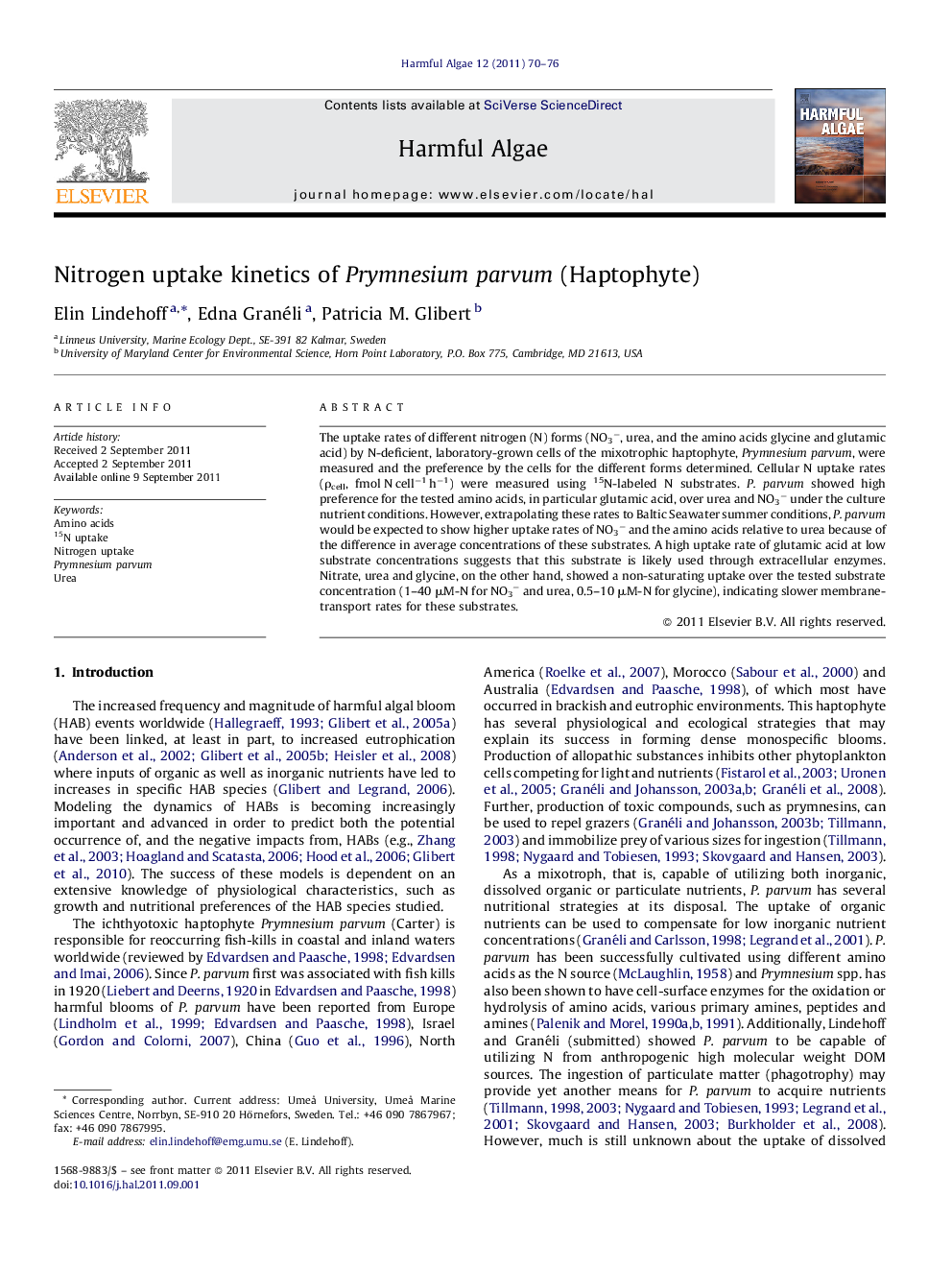| Article ID | Journal | Published Year | Pages | File Type |
|---|---|---|---|---|
| 4545582 | Harmful Algae | 2011 | 7 Pages |
The uptake rates of different nitrogen (N) forms (NO3−, urea, and the amino acids glycine and glutamic acid) by N-deficient, laboratory-grown cells of the mixotrophic haptophyte, Prymnesium parvum, were measured and the preference by the cells for the different forms determined. Cellular N uptake rates (ρcell, fmol N cell−1 h−1) were measured using 15N-labeled N substrates. P. parvum showed high preference for the tested amino acids, in particular glutamic acid, over urea and NO3− under the culture nutrient conditions. However, extrapolating these rates to Baltic Seawater summer conditions, P. parvum would be expected to show higher uptake rates of NO3− and the amino acids relative to urea because of the difference in average concentrations of these substrates. A high uptake rate of glutamic acid at low substrate concentrations suggests that this substrate is likely used through extracellular enzymes. Nitrate, urea and glycine, on the other hand, showed a non-saturating uptake over the tested substrate concentration (1–40 μM-N for NO3− and urea, 0.5–10 μM-N for glycine), indicating slower membrane-transport rates for these substrates.
► Nitrogen uptake rates of NO3−, urea, glycine and glutamic acid by Prymnesium parvum. ► P. parvum showed high preference for the tested amino acids. ► Preference for NO3− and glu are expected to be higher at natural conditions. ► Presents insights to the success of P. parvum to bloom in organic rich waters.
